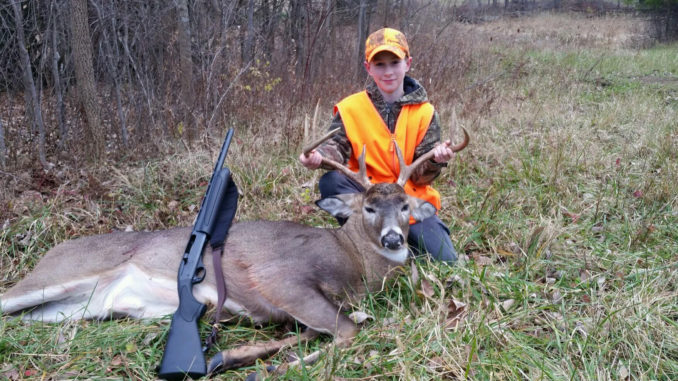
Post-season work can make next season great
Deer season has been over for more than a month, and while many hunters have switched over to other furry and feathered targets, it’s a perfect time to improve next season’s deer-hunting opportunities. February is time to evaluate last season and prepare for the next. Deer hunters looking for a wall-hanger need to stay on track and find out what worked and what didn’t.
First, evaluate what worked and what didn’t. Every hunter generally has at least one super stand where he or she saw plenty of good bucks and maybe even took a trophy. And with a super stand, there are plenty of mediocre stands and a few duds. Hunters need to ask themselves, what made these hot spots good and the bad stands bad?
While some deer seem to have master degrees in hunter avoidance, they are really simple creatures with a few basic needs. Deer need food, water and cover, and they want to stay alive long enough to pass on their genes to future generations. The hot stands from last season were not just by chance; there was something special about these locations that worked for deer and hunters targeting them.
Basically, it is one of two basic situations: deer were able to eat well in a safe place or the stand was located in a corridor they felt safe to use between their customary bedding, feeding and/or watering areas. The key is safety. Deer will continue to use areas that allow them to meet their daily needs without feeling death knocking at their door.
Deer stands in areas that didn’t provide any action at all were flawed. There was something that didn’t meet the safety criteria, one of a number of reasons, including: the distance from the stand area to the bedding area, quality or quantity of food or browse present, or even issues with the wind.
A deer’s keen sense of smell is its top survival sense. If deer detect human scent in their core areas, they go on high alert and may find other places to live. No matter how hungry deer are, they will never walk into an area littered with active human scent.
Quite often, hunters will continue to hunt an unproductive area until the last day of the season for one reason: overwhelming deer sign around the stand, including trampled ground, tons of tracks and fresh buck sign everywhere. No doubt, deer may have been using the area at some point of the day. If hunters don’t ever see anything, it is because of one of two reasons: poor stand placement or hunting when the deer aren’t using the area.
Hunters can find out when deer are using their area with a trail-camera survey, allowing hunters to know when to hunt these stands and when to go somewhere else.
Hunters should consider moving a tree stand to another side of the area and hunting it on different winds. Regardless, poor results in areas of high buck activity call for stand changes. If the deer activity around a stand is poor, with little track or buck sign evidence, the stand needs to be moved period.
Beyond stand placement, food sources need to be evaluated after the season. Hunters spend thousands of dollars on food plots and small agricultural operations for their deer herds. Food plots should be producing and attracting deer all season and after the season ends. If not, these cool-season food plots need to be revamped to produce their intended results.
For instance, small-grain crops planted in the fall should be still sprouting and providing deer with a steady food source. If cool-season plots planted in the early fall didn’t last through the season, there is something wrong with the food-plot formula on those sites. Poor plot production can be a sign of a wide number of issues, including: weed competition, lack of sunlight, nutrient/pH deficiency, insufficient moisture and overgrazing. Well-managed food plots should regenerate and provide food the entire season.
The most-common downfall with cool-season plots is poor availability from overgrazing and nutrient deficiency, especially with small-grain plots of rye and oats. These are some of the easiest to grow during the winter, with the least amount of preparation and supervision. Overgrazing occurs when the plots are too small and are in unfortified soils. Unfortified soils can be corrected through soil testing and proper amendments before planting and during the growing process.
Small food plots are often ineffective at attracting and retaining quantities of deer. To turn food plots into strong, consistent food sources, they need to be expanded to a minimum of one acre. Larger plots can withstand overgrazing better than small ones.
For some, deer hunting is about dumping out a few bags of corn and sitting in a tree, hoping a decent deer comes to the sweet aroma. But for many, it is much more than that, a year-around process and a season of strategies. Develop a plan for next year and start working on it today.




Be the first to comment